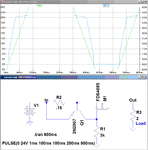mariuszoll
Member level 5
Hi,
I have to implement a shortcut protection in my project.
Can somebody give me some ideas in order to know how to make it.
Thank you in advance.
I have to implement a shortcut protection in my project.
Can somebody give me some ideas in order to know how to make it.
Thank you in advance.
